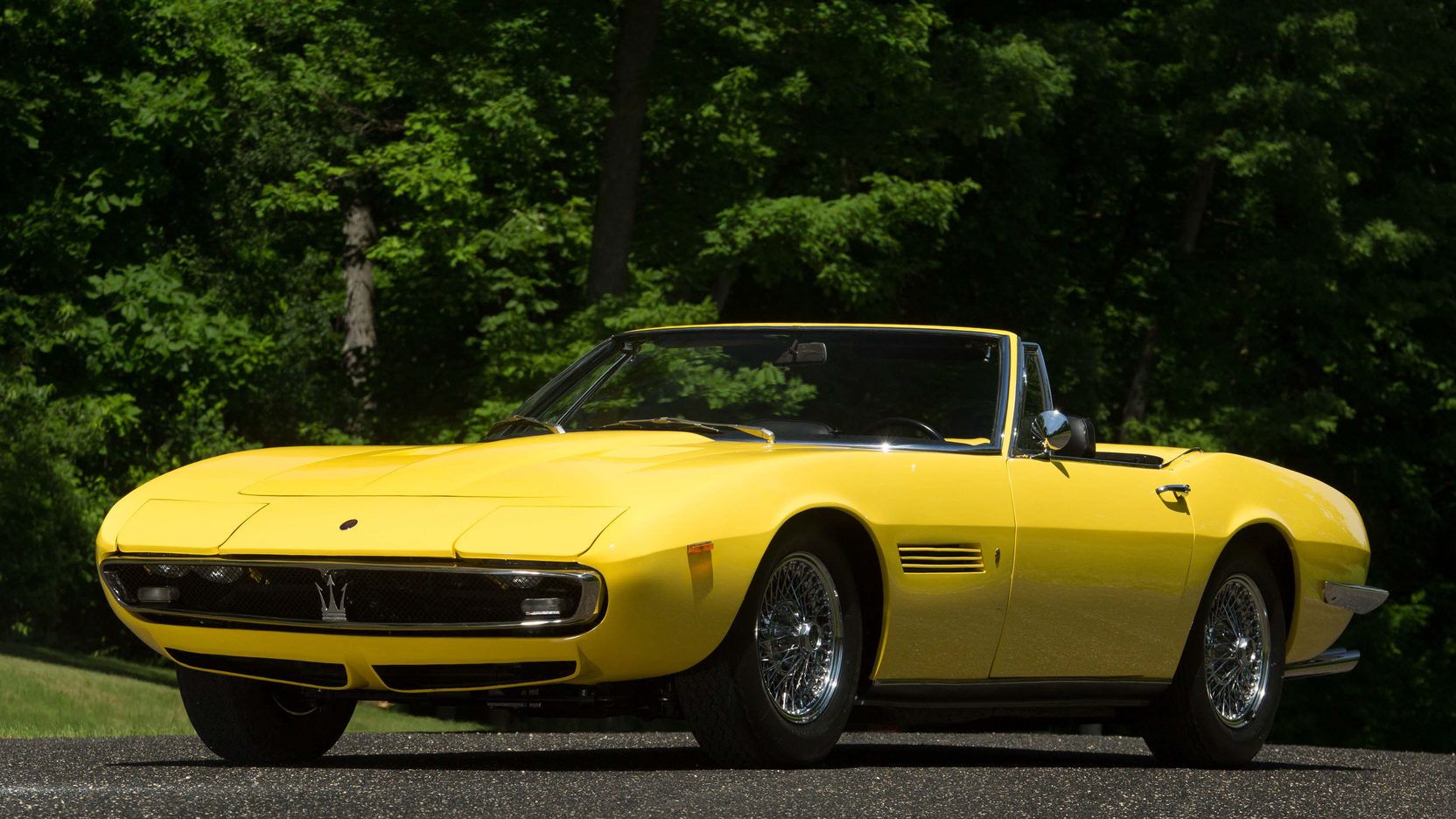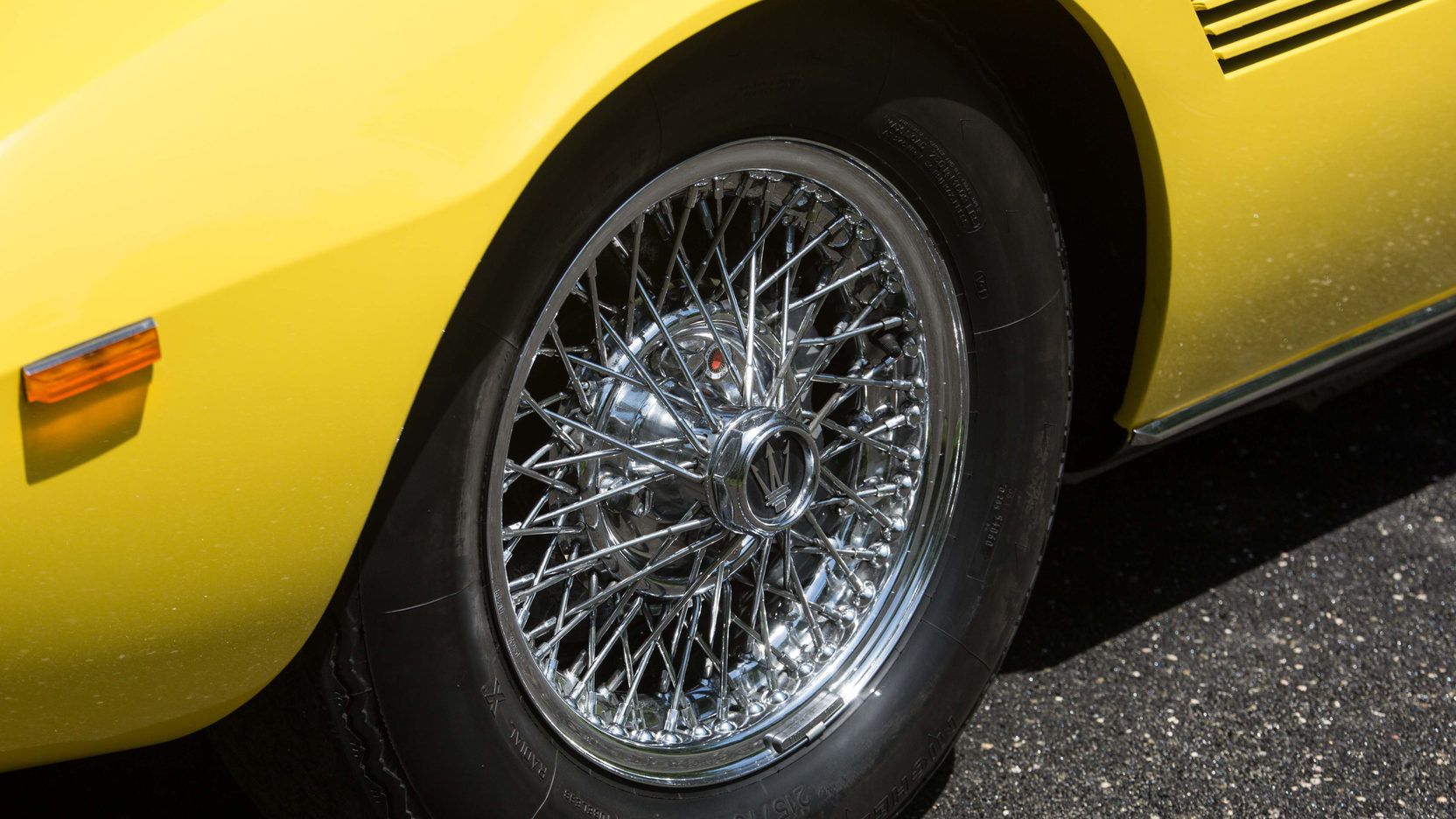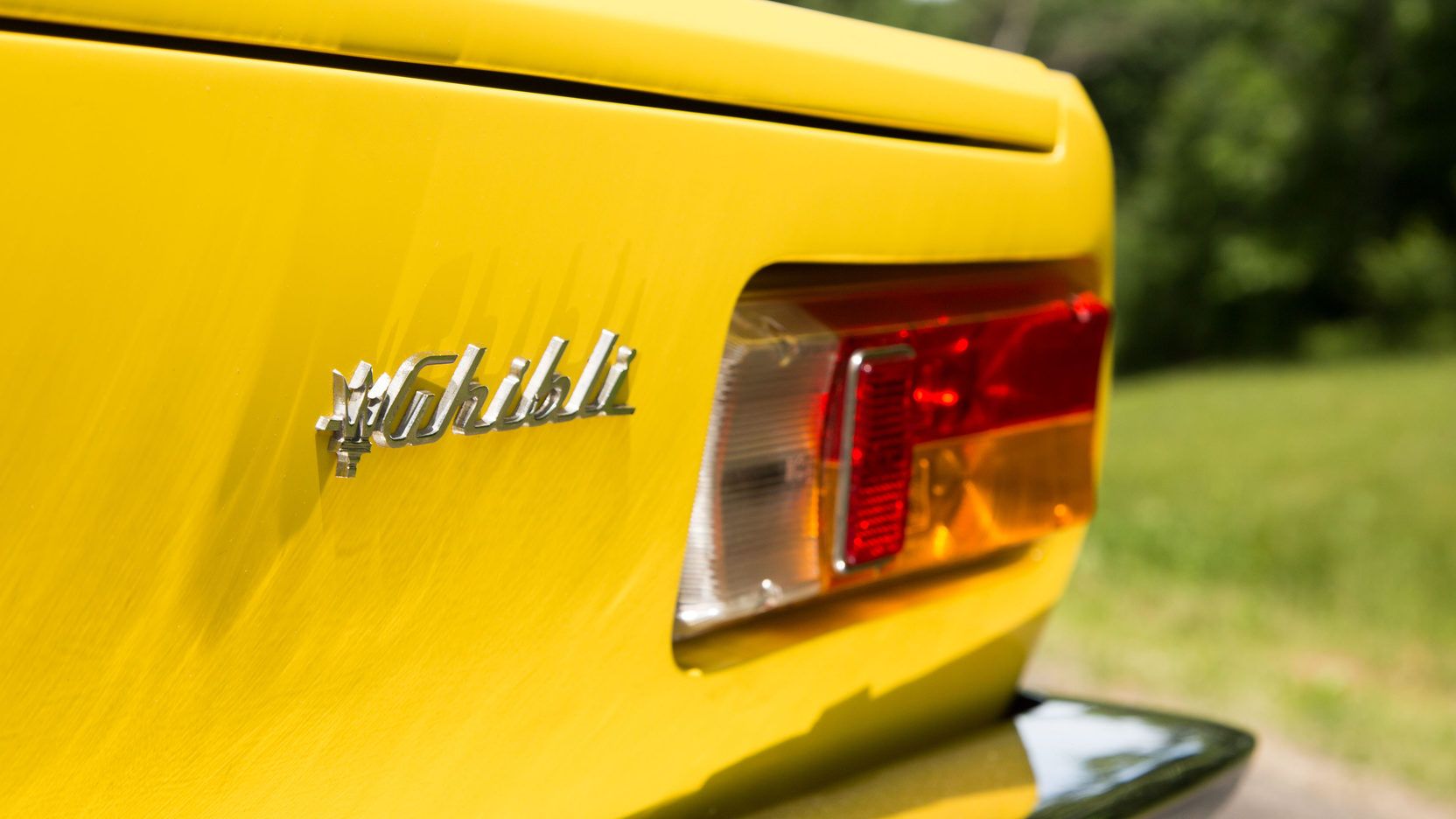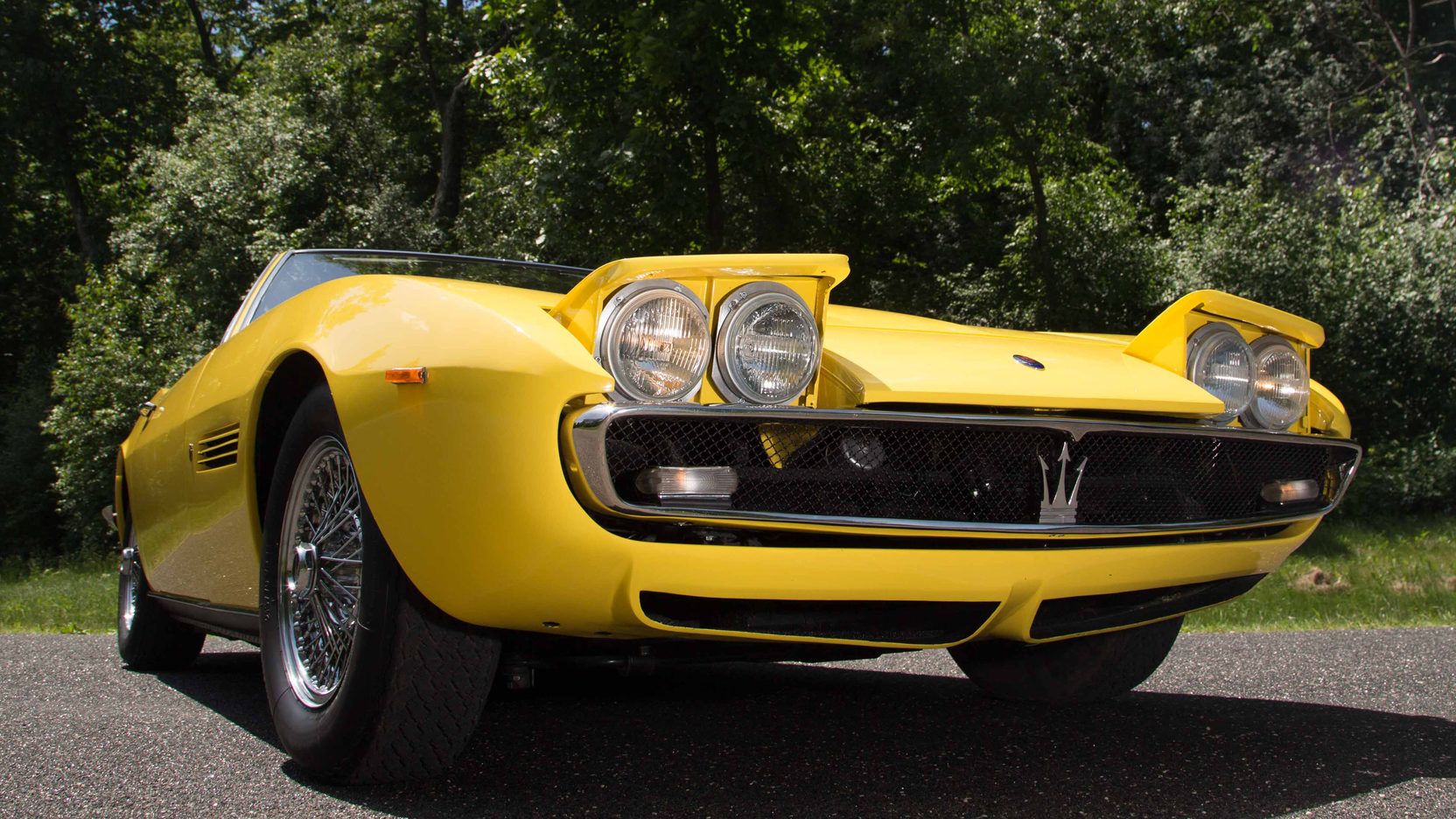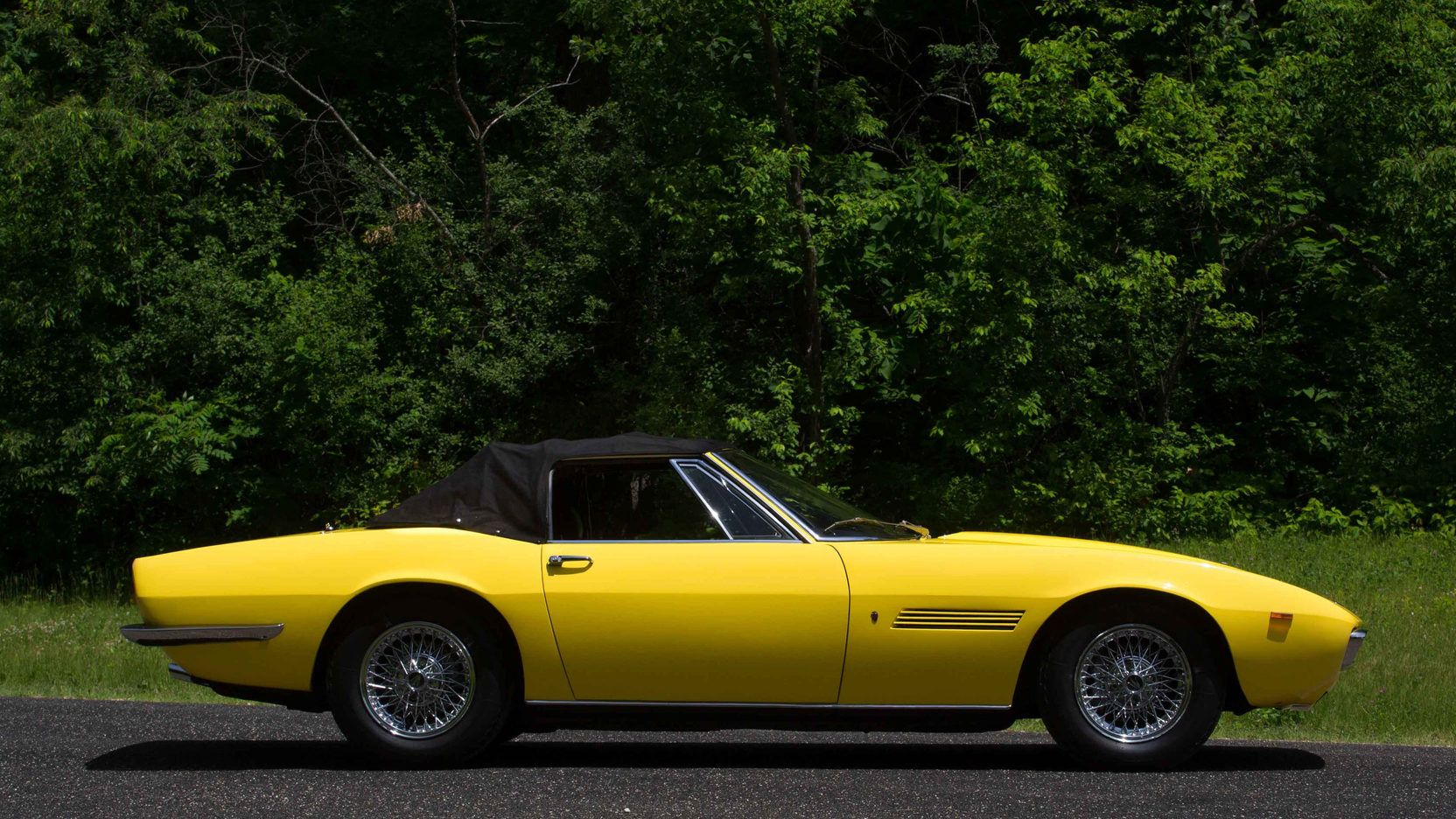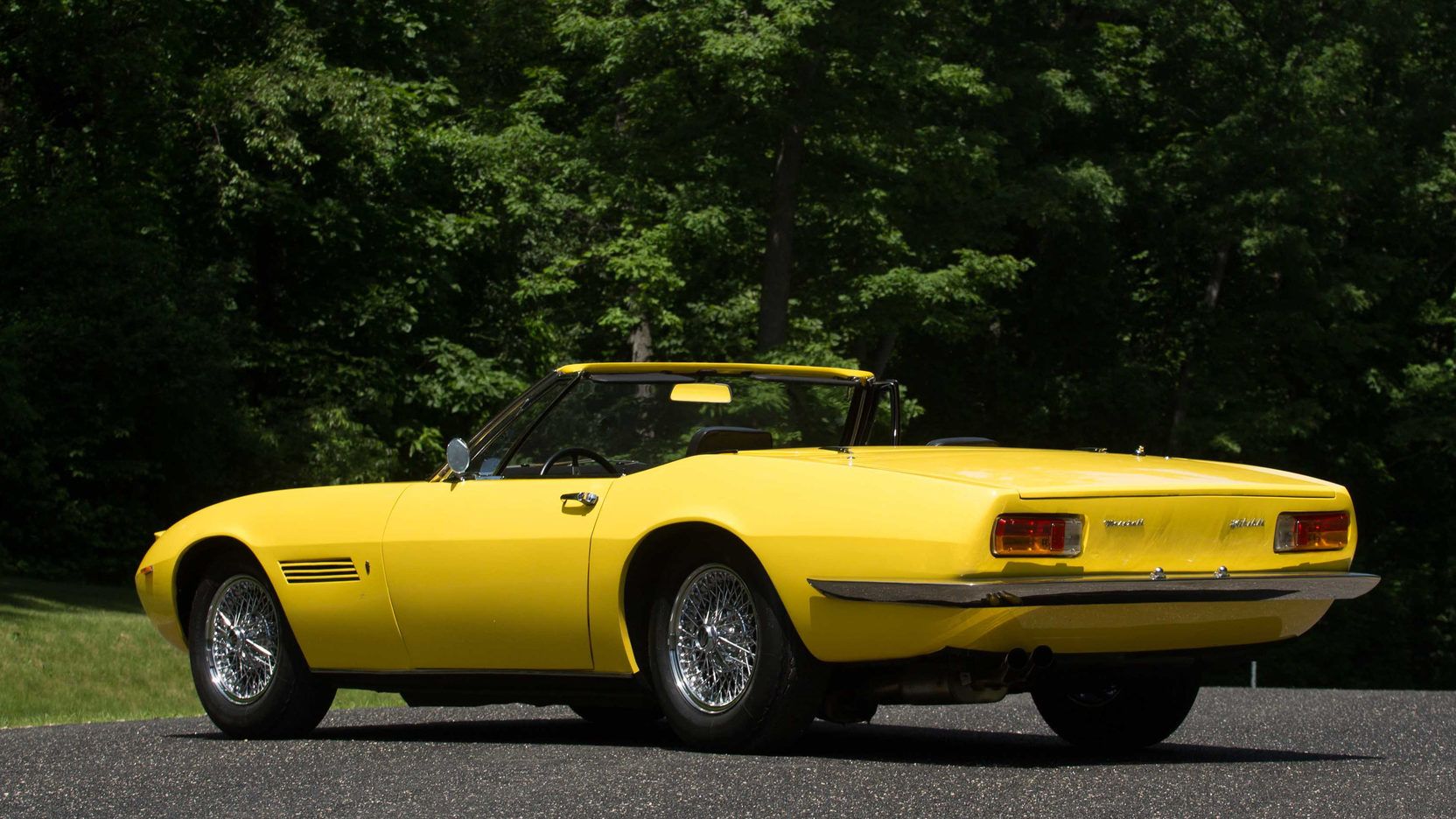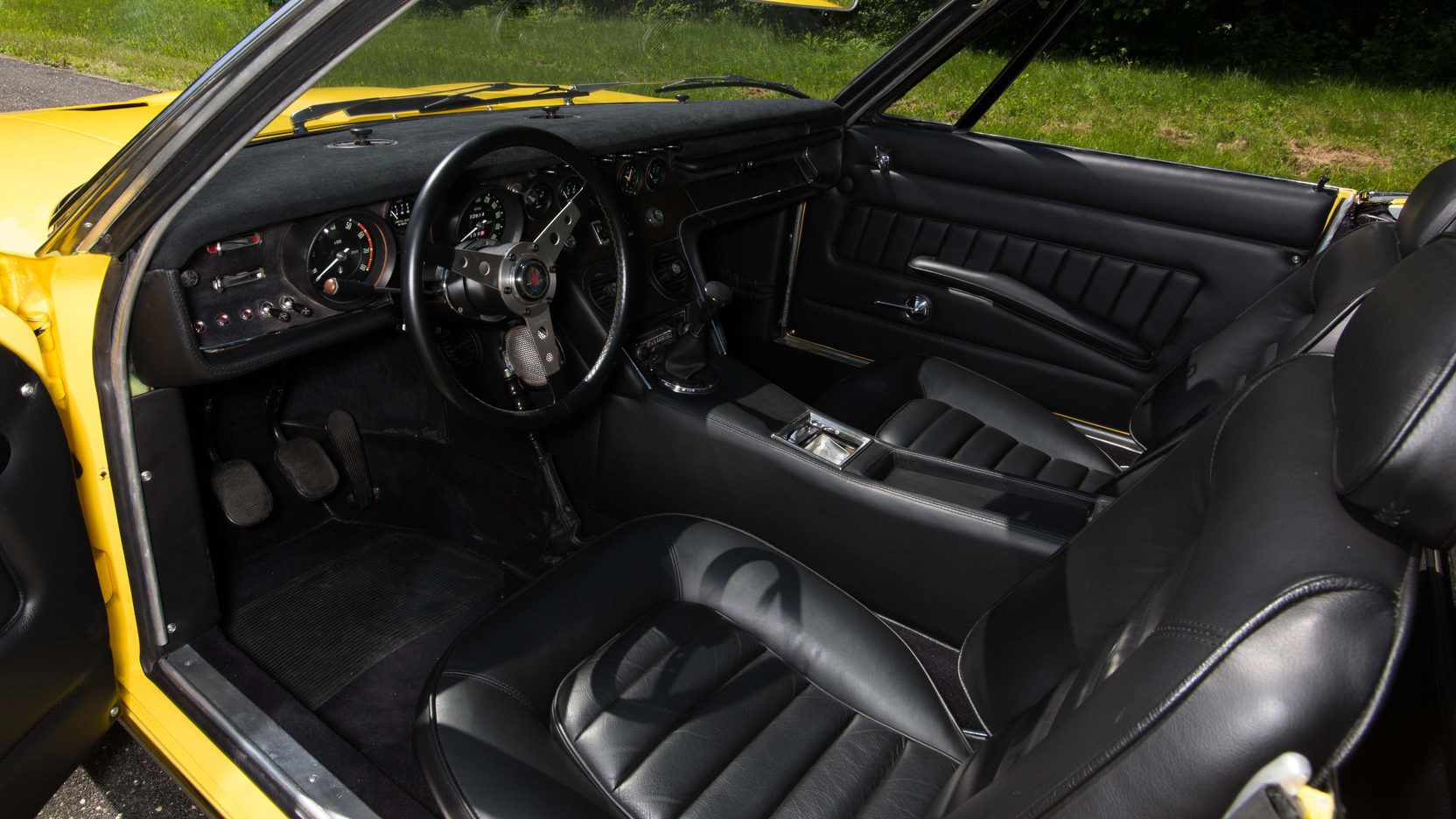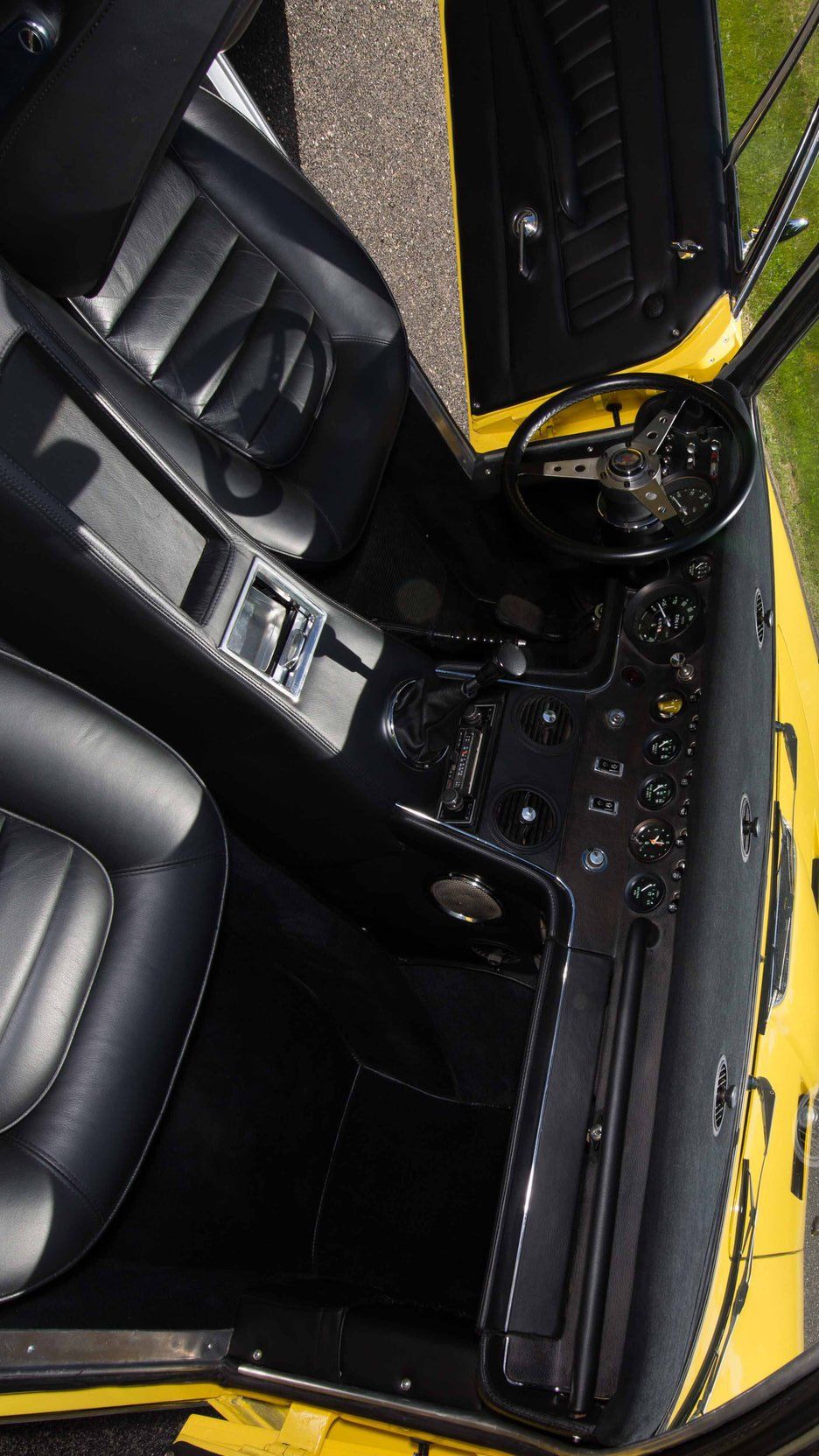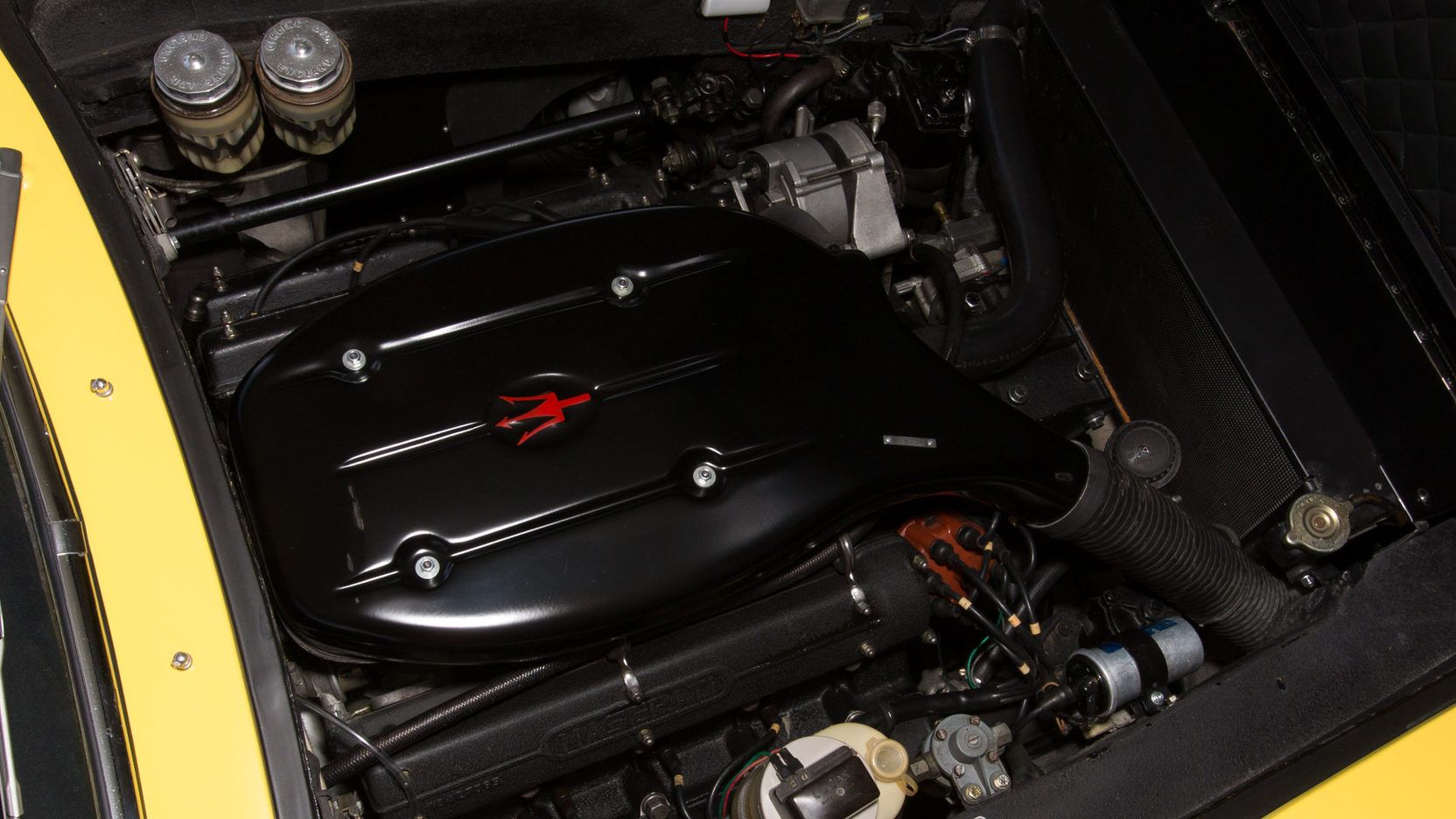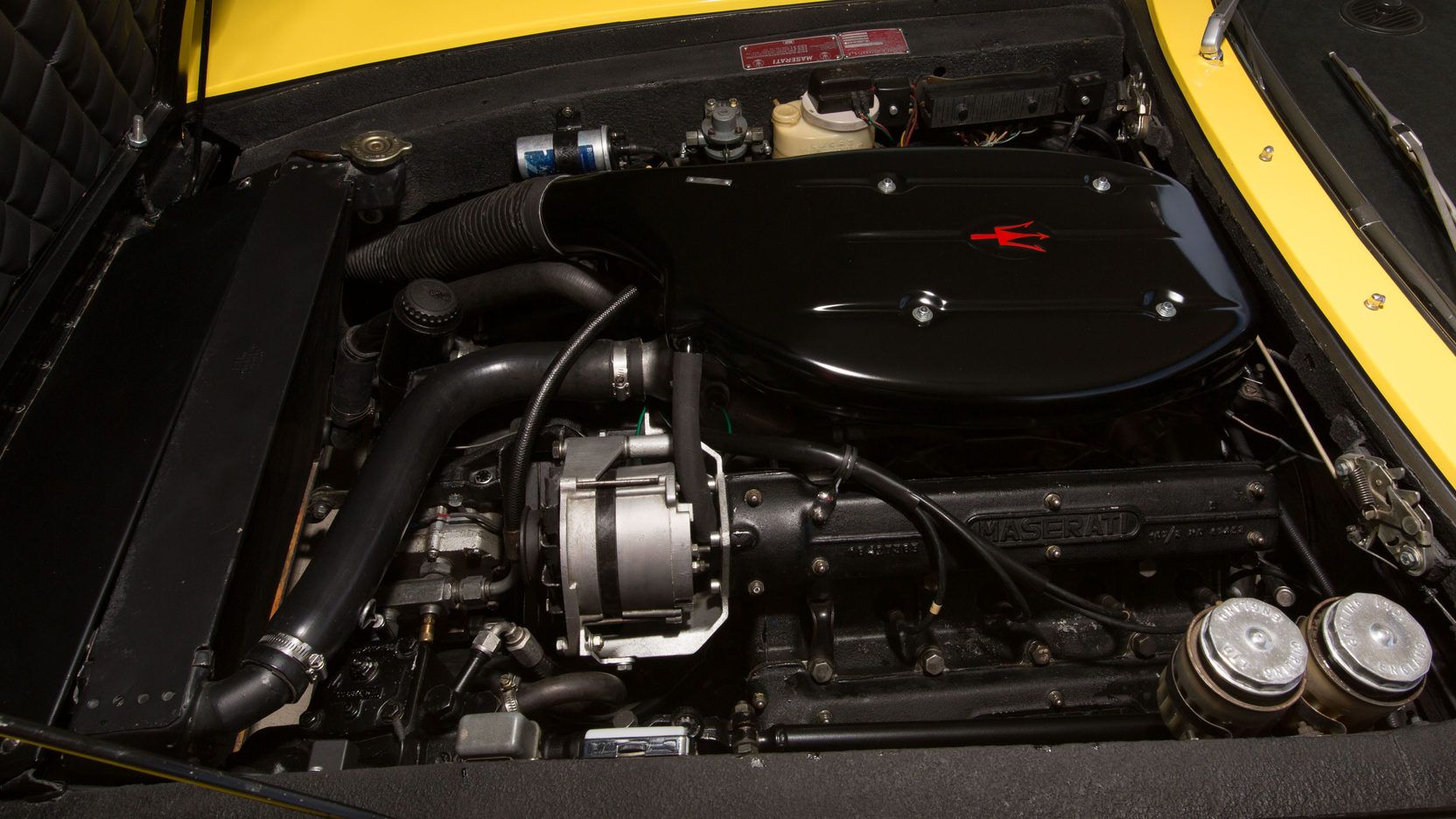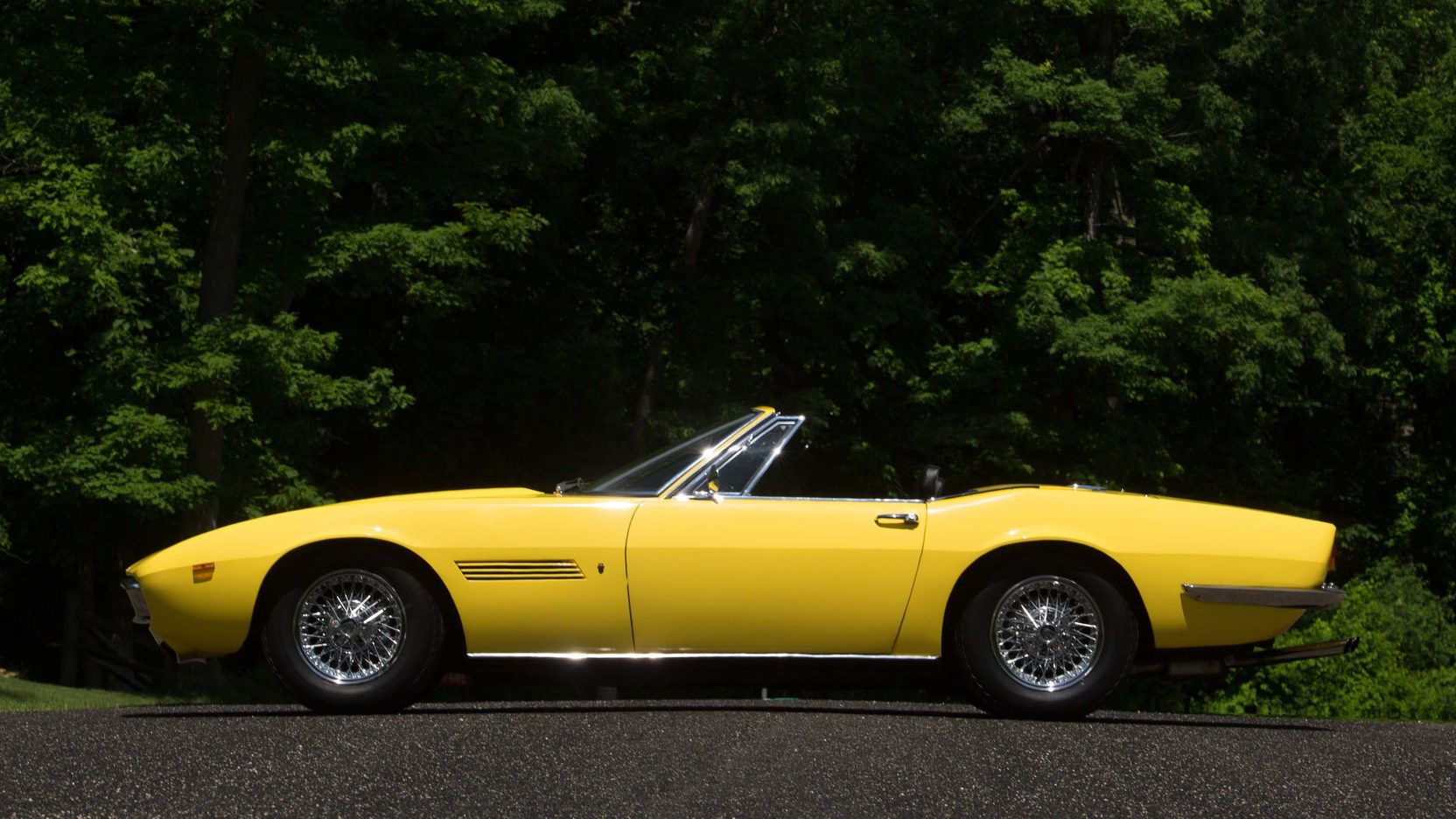The Ghibli name has been used for three, very different vehicles from Maserati, with the most recent making its debut in 2013. The second-generation of the car was produced from 1992 to 1998 and was a two-door coupe that looked like it should have had four doors and somewhat resembled a Volkswagen Jetta. The first generation was arguably the best of any car to bear the Ghibli name, and a rare, spyder version just went up for auction through Mecum during Monterey Car Week 2016.
Produced between 1967 and 1973, the Ghibli was produced in 1295 examples, 1,170 of which were in coupe form. There were 125 Spyder examples created, but only 37 of those were produced with the 4.9-liter and a five-speed manual transmission as standard equipment. And, the beautiful yellow example that you see here is one of them. To make the car even rarer, however, is the fact that the car was built for the U.S. market but was completed to Euro specifications – an honor that only 14 other models are said to share with this model.
Knowledge of the car’s history is pretty thin, but it was delivered brand new to Prestige Motors in California. From there everything is a bit of a mystery until 1994 when a Maserati Owners Club member purchased the car. At this point, the car was due for restoration. In 2008, it was sent to Motorcar Galler in Florida and later returned to Europe for full restoration to the condition you see before you. Presented with the auction was a letter from Maserati Classiche that confirms it is authentic and a second letter that certifies the location it was shipped when new and that it still wore the Giallo Yellow paint that you see on the car today.
That’s about enough for a history lesson, though. Let’s dive on in and take a look at this Maserati Ghibli Spyder and talk a little about it.
Continue reading to learn more about the 1969 Maserati Ghibli Spyder.
1969 Maserati Ghibli Spyder
- Make: Array
- Model: 1969 Maserati Ghibli Spyder
- [do not use] Vehicle Model: Array
Exterior
For being of Italian design, this car has more of an American muscle look to it than one would really expect from a Maserati. Up front, the car had flip-up headlights and a wide mouth radiator grille that features black mesh and integrated turn signals. A Maserati crown sits in the middle of the grille and down below you’ll find two rectangular air vents – a place where we Americans would probably ruin the car by adding in a pair of fog lights. The hood itself is quite narrow but features a small scoop in the middle that really adds character to the front end.
Moving over to the side, a sharp but thin bodyline wraps around from the front end and travels to the rear. It follows the contour of the wheel arches in the front and rear but remains straight across the door and fenders. Between the door and the front wheel arch sits a functional vent with three slats. The doors and side skirts share the commonality of being completely smooth. There is a chrome door handle that matches the chrome side view mirror on the driver’s side. I should also point out that the front doors have a small window up front, which is somewhat of a rare thing for convertible vehicles. Moving farther to the back, the rear quarter panels swoop upward giving the car a commanding and muscular appearance, similar to that of Oldsmobile and Chevy vehicles from the same era.
Around back things are excessively simple. The rear decklid is completely flat and is no more than an inch thick even at the very rear. Rectangular taillights are fit to the rear that features integrated turn signals and reverse lights. The area between the taillights is completely smooth with no body lines or defining features to speak of. There are Maserati and Ghibli badges in this area, but they are small and far from defining. In the middle of the rear, there’s a thin chrome bumper that wraps around and comes to a sharp point on each end. Two humps in the middle serve as license plate mounts. A dual exhaust exit protrudes from the driver’s side in the rear and sweeps upward just ahead of the body. All told it’s a beautiful but simple design and is a good reminder of how simple things were back then.
Interior
The inside of this beauty is absolutely phenomenal. The top of the dash is covered by a soft fabric while the lower portion of the dash and the rest of the interior trim is wrapped in leather that is sewn together with black stitching. The seats, steering wheel, and door panels are also wrapped in the same leather. Instead of having an instrument cluster, the area of the dash ahead of the steering wheel and above the center console is filled with various gauges. On the passenger side, there’s a large metal handle that was surely put in place to make the passenger feel better when the driver decided to get a little frisky. Tying together the interior is that black carpeting with built in rubber floor mats to protect the floor.
Drivetrain
Under the hood, you’ll find a 4.9-liter V-8 that was rated at 330 horsepower. There isn’t a lot of verifiable information out there about the engine, but it did feature four vertical, twin-choke weber carburetors and delivered 20 horsepower more than the 4.7-liter used in the standard Ghibli. This specific model features a five-speed manual transmission which is said to be a rare combination on this model with only 15 models featuring this combination in euro spec for the U.S. market and just one of 37 altogether. Performance specs aren’t readily available, but you can rest assured that this car wasn’t exactly a slouch.
Pricing
I was unable to find original pricing information for this model, but that’s not exactly unexpected given the car’s actual rarity compared to a lot of cars from this era. This specific model went under the hammer at a Mecum auction during Monterey Car Week 2016. It failed to sell but was expected to go for anywhere between $900.000 and $1.2 million. Unfortunately, it didn’t even get close, so look for this model to go under the hammer again sometime in the near future.
Competition
Ferrari 365 GTS/4 Spyder
The 365 replaced the 265 in Ferrari’s lineup. Originally codenamed “Daytona” Ferrari didn’t see fit to include that wording the official name. Despite this fact, the car is more well known as the “Ferrari Daytona” than its official name. Just like the Ghibli Spyder, the GTS/4 Spyder was produced in limited numbers with the official number documented as 122 examples. Of those 122 examples, only 18 were built to Euro specifications with left-hand drive. The car was powered by a 4.4-liter V-12 that delivered a cool 352 horsepower and 315 pound-feet of torque. Power was sent to the rear wheels, and top speed was rated at 175 mph. Believe it or not, the engine used a single carburetor for each pair of cylinders, meaning this baby had a total of six, dual-choke, Weber carburetors lined up across the intake manifold. Overall, the body style was comparable to that of the Ghibli Spyder. Recently place for auction, a Euro-spec model was estimated to sell for between $1 million and $1.3 million. Yikes.
Read our full review on the Ferrari 365 GTS/4 Spyder here.
Conclusion
I have to say that I’m honestly surprised that this model didn’t sell at its most recent auction run. While it has been restored, it is in excellent condition and is verified numbers matching. The only thing that may have pushed bidders in the opposite direction is that this model lacks the “49” numbering on the chassis that models with the 49 had. This was verified to be a true, numbers matching vehicle that was built before homologation, by Maserati Classiche, but I could see bidders being skeptical on the spot given the estimated selling point of this beauty. All told, this is a fine example of Maserati history and I would be more than happy to give it a place in my garage. Unfortunately, I don’t have a spare million sitting around.

